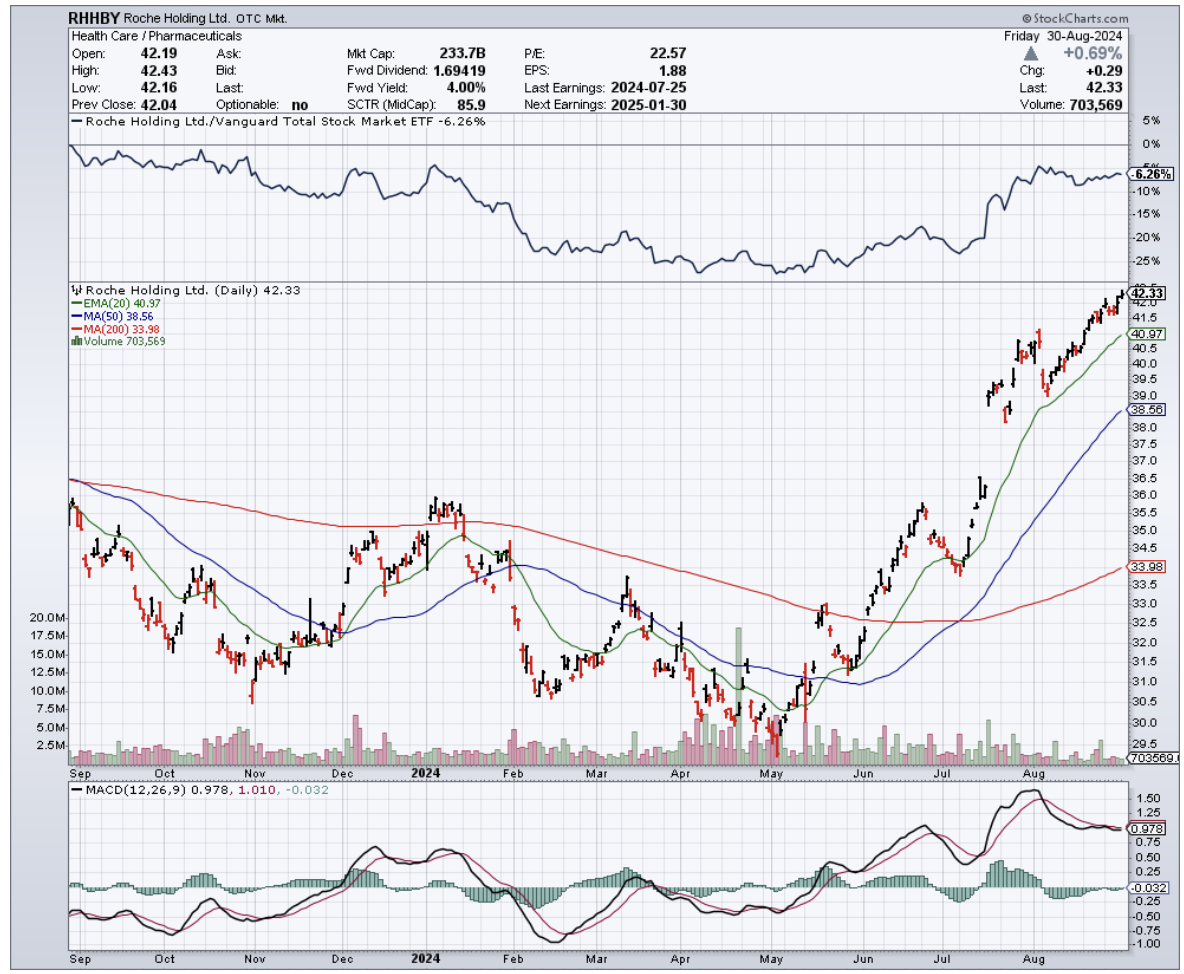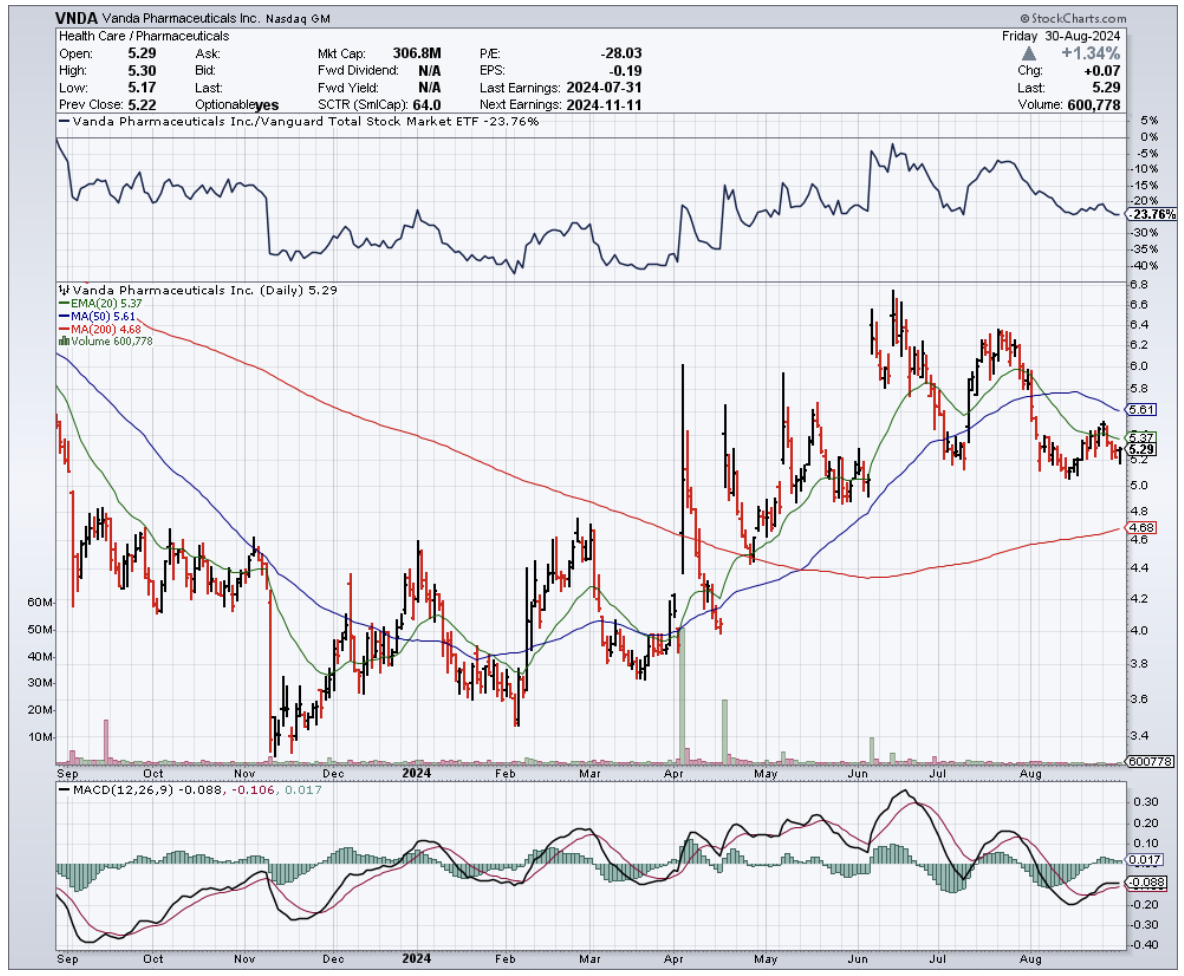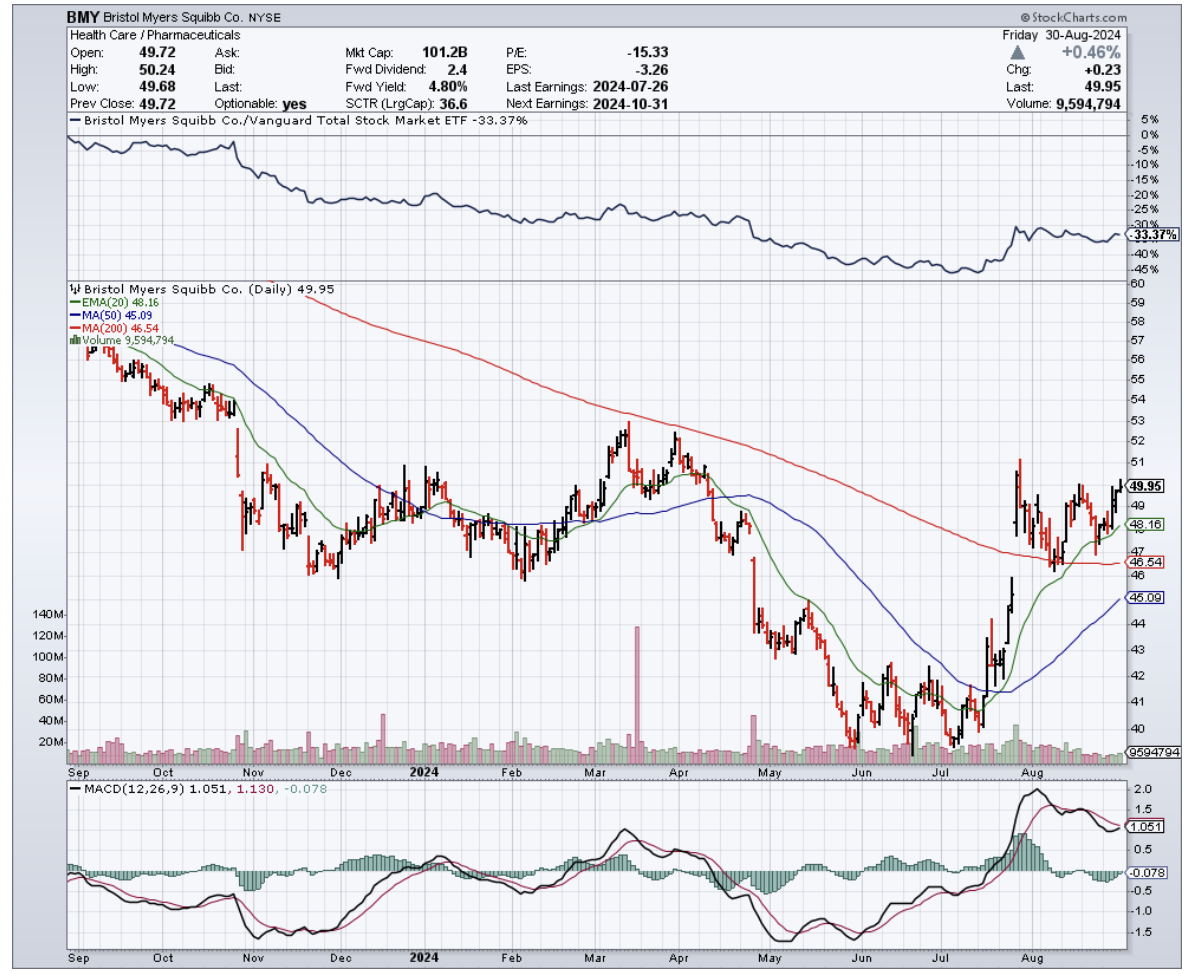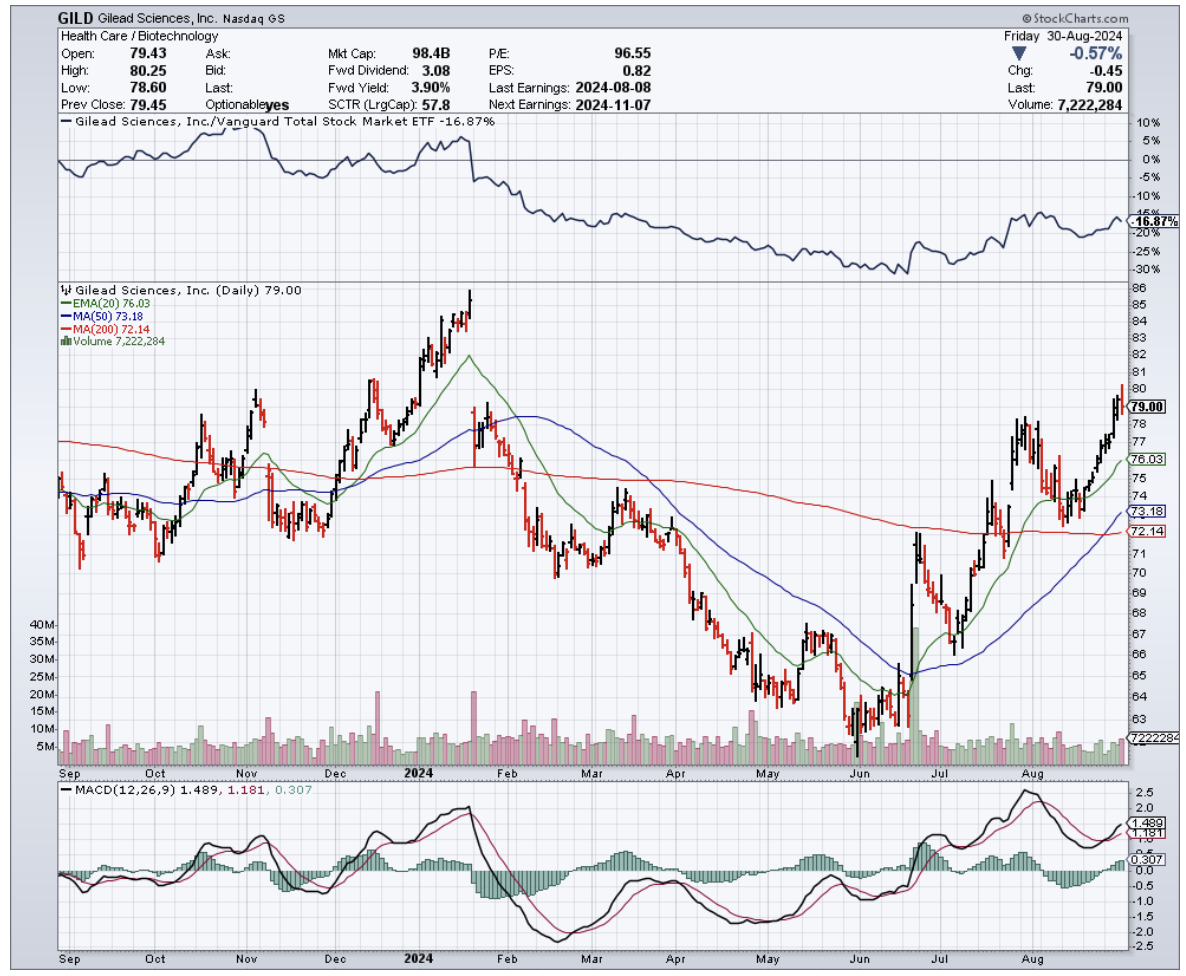Remember when you'd jump into a hot tub and the water was just right? That's what the biotech sector feels like right now - it's warming up and ready for a splash.
After years of treading water, biotech stocks are showing signs of life. High interest rates and cash crunches have kept this sector on the sidelines, but the game is changing.
September 2024 is shaping up to be a blockbuster month for the sector, with FDA decisions that could send stocks soaring - or sinking.
First up, Roche Holding AG (RHHBY) is waiting on pins and needles for the FDA's verdict on Ocrevus SC. This isn't just another drug - it's a new way to deliver their multiple sclerosis cash cow.
If the FDA gives the green light on September 13, Roche could be looking at a bigger slice of the MS pie. Why? Because this new version doesn't need fancy IV setups, opening doors to treatment centers that were previously off-limits.
But Roche isn't the only one with butterflies in its stomach.
Vanda Pharmaceuticals (VNDA) is hoping to make history on September 18 with Tradipitant. This drug aims to tackle gastroparesis, a condition that's been stuck in treatment limbo for four decades. If Tradipitant gets the nod, Vanda could find itself as the big fish in a very lucrative pond.
And let's not forget about the underdogs.
Zevra Therapeutics (ZVRA) is crossing its fingers for Arimoclomol. This potential game-changer targets Niemann-Pick disease type C, a rare brain disorder that's been waiting for its medical knight in shining armor. September 21 could be that day.
These approvals aren't just good news for the companies involved. They're like a shot of adrenaline for the whole biotech sector. Investors love nothing more than seeing potential turn into profit.
But it's not all about solo acts in biotech. These days, it's all about partnerships.
Take Halozyme Therapeutics (HALO), for instance. They've buddied up with Roche to develop Ocrevus SC, bringing their ENHANZE technology to the party.
These kinds of collaborations are golddust for smaller biotech firms. They get access to resources and markets they could only dream of on their own, making them much more attractive to investors with deep pockets.
Speaking of deep pockets, big pharma companies are on the prowl, and several biotech firms are looking mighty tasty.
Bristol-Myers Squibb (BMY) just showed us how it's done by snatching up Karuna Therapeutics. Why? Two words: KarXT.
This antipsychotic drug is currently under FDA review for schizophrenia, and if approved, it could be another lucrative revenue stream. This kind of deal is a win-win. The big fish gets new toys for its pipeline, and the smaller fish gets a cushy new home.
Now, let's talk about the elephant in the room - interest rates.
Biotech companies and high interest rates go together like oil and water. These firms need cash like plants need water, and high rates make that cash harder to come by.
But here's the thing: the Federal Reserve is hinting at rate cuts.
For biotech, that's like Christmas coming early. Lower rates mean easier borrowing and easier borrowing means more research, more trials, and potentially more breakthroughs.
So if rates drop, don't be surprised to see biotech stocks shoot up faster than a rocket.
But it's not just about drugs in the pipeline. The biotech sector is also home to some serious innovation.
Take gene editing and CRISPR. This isn't your grandpa's genetics - it's like we've found the “track changes” function for DNA.
The market for this molecular magic is set to explode from $4 billion in 2024 to a whopping $17.8 billion by 2034. That's a 16.1% annual growth rate, for those of you keeping score at home.
With this technology, I’m not just talking about curing rare diseases here. I’m talking about the possibility of having your own home testing kits that could make your 23andMe results look like a fortune cookie.
And then there’s personalized medicine, which is turning healthcare into a bespoke tailor shop. Your DNA is becoming the blueprint for your treatments, and the market is following suit.
We're looking at a jump from $300 billion in 2021 to $869.5 billion by 2031. Why the boom? Well, sequencing your DNA used to cost more than a mansion.
Now it's cheaper than a decent night out in New York - from over $1 million in 2007 to about $600 today.
Stem cells and regenerative medicine are also getting investors hot under the collar. We're talking about potentially regrowing organs or giving Parkinson's the boot.
This market is set to grow at a spicy 9.74% annually from 2023 to 2030. Basically, it’s like we're entering the age of biological LEGO.
And let's not forget AI - the new brainiac in the lab. It's turning drug discovery into a high-speed chess game, with the AI market in healthcare expected to hit $95.65 billion by 2028.
With the innovations from this tech, scientists could have supercomputers as their lab partners – ones that never need coffee breaks and can crunch data faster than you can say "blockbuster drug."
Given all these possibilities, I think it’s a good time to talk about strategy. After all, investing in biotech isn't one-size-fits-all. It's more like a buffet - you pick what suits your taste and risk appetite.
For the adrenaline junkies who like to walk the tightrope without a net, there's the high-risk, growth investor approach. These brave souls get their kicks from cutting-edge stuff like gene editing and personalized medicine, often diving into early-stage biotech firms working on the next big breakthrough.
It's not for the faint of heart - these stocks can swing wilder than a monkey on espresso. But when they hit, oh boy, do they hit.
Just look at the personalized medicine market - it's set to explode from $300 billion in 2021 to a mind-boggling $869.5 billion by 2031. That's the kind of growth that could make your portfolio do backflips, assuming you can stomach the ride.
On the other side of the petri dish, we've got the value and low-risk investors. These are the steady hands who prefer their biotech stocks aged like fine wine and served with a side of sleep-easy. They're eyeing established companies with robust pipelines, diverse portfolios of approved drugs, and ongoing trials.
Think Roche with its Ocrevus SC, or old guards like Gilead Sciences (GILD) that have weathered more storms than a lighthouse.
These investors are the tortoises in the biotech race - slow and steady, but with a knack for crossing the finish line, often with a healthy dividend check in hand. They might not make headlines, but they're more likely to let you sleep soundly while your portfolio does the heavy lifting.
No matter which style you choose, one thing is undeniable: the biotech sector is like a sleeping giant, and it's starting to stir. The question is, will you heed the wake-up call or sleep through the alarm?




